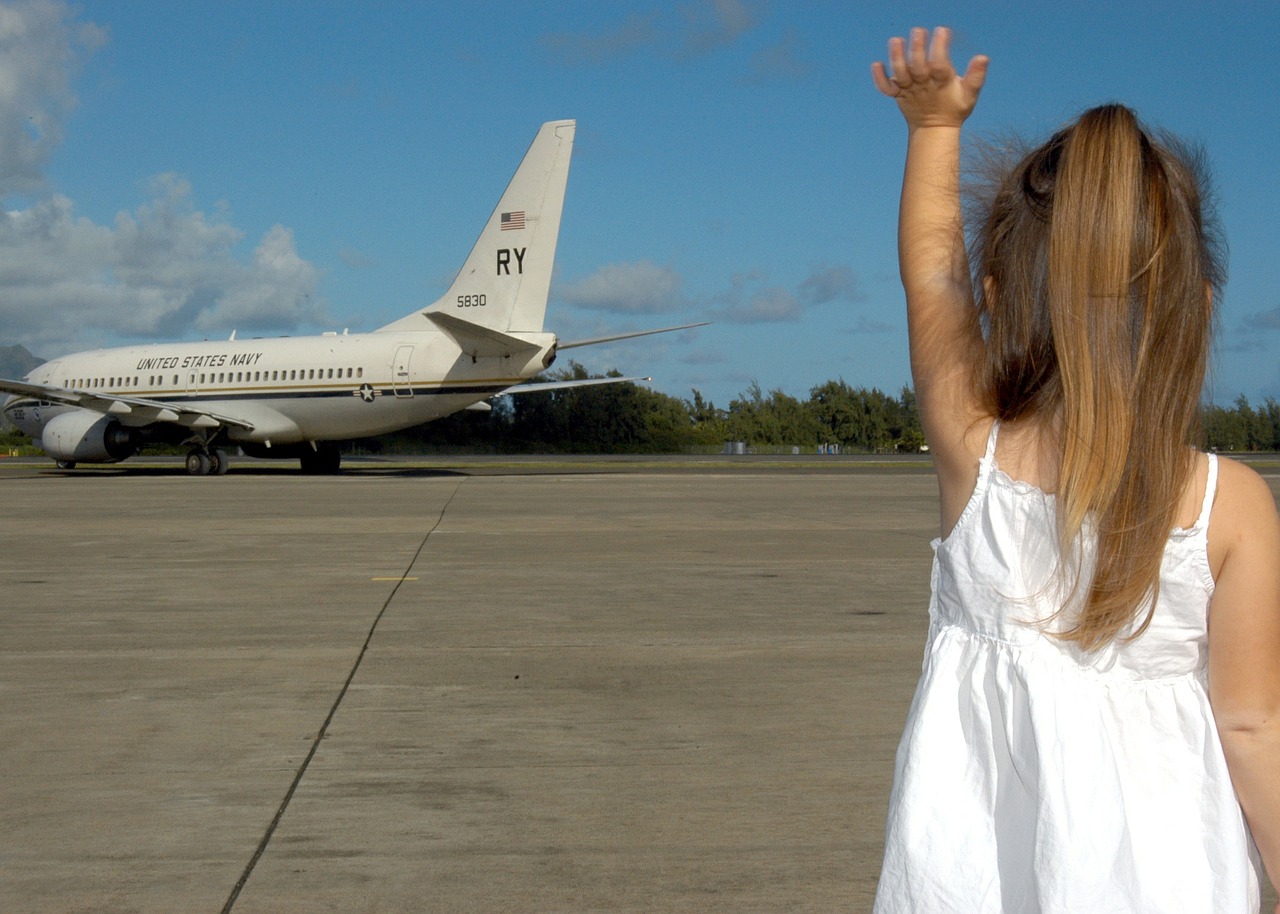This article is dedicated to any parent flying with kids or a baby.
To ease your navigation through the text below, we have highlighted different Key Sections to help you through every stage of your flight.
Enjoy the read!
Booking your flights
This is step 1 after you have chosen your destination.
There are always questions about children and ticket fares, so we hope to shed some light in the section below. Nonetheless, you should always check the airline policy on ‘flying with children’ as there may be changes and updates over time. If unsure, contact the airline by phone to get a clarification before making your booking.
Travelling with Children under 2 years of age
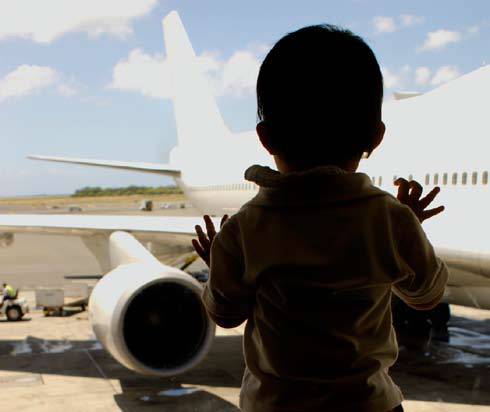 Generally speaking, children under 2 years old are not charged full fares. They may pay taxes or a percentage of the fare (depending on the airline and the destination), but not the full ticket fare.
Generally speaking, children under 2 years old are not charged full fares. They may pay taxes or a percentage of the fare (depending on the airline and the destination), but not the full ticket fare.
If your child is not paying a ticket fare, that means he/she is not entitled to his/ her own seat, which in turn means he/ she will need to travel on your lap.
Children that don’t pay ticket fares don’t have baggage allowance. Consider sharing your bag allowance with your child so you don’t incur in extra fees by adding an additional piece of luggage.
Bassinet for infants
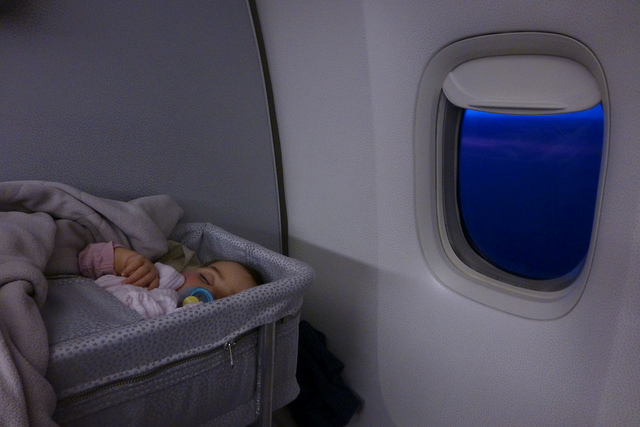
Whenever you request a bassinet, you will need to tell the airline your child’s weight and height. This is to ensure he/ she fits properly.
For long distance flights, some airlines offer a bassinet for infants at a small fare. The bassinet is a little removable crib that is attached to the wall in front of you. As not all seats on a plane can hold bassinets in front of them, you will need to contact the airline to ensure this feature is added to your booking.
Some airlines may also ask you to contact them approx. 72 hours before your flight to confirm the bassinet has been added to your booking. It is also important to remind the airline staff about your request when you are doing the check-in at the airport.
Stroller or another large baby item
Even though you are not allowed to take a stroller in the cabin, most airlines will let you check 1 large baby item for free, even if your baby is not paying the ticket fare.
The large baby item may be a portacot, stroller or car seat. Check with the airline to avoid unpleasant surprises at check-in.
Generally speaking, a one piece collapsible stroller will make your life easier at the airport. You can check out our article on how to fly with an infant stroller here.
What happens if your child is older than 2 years of age or will turn 2 before the return date?
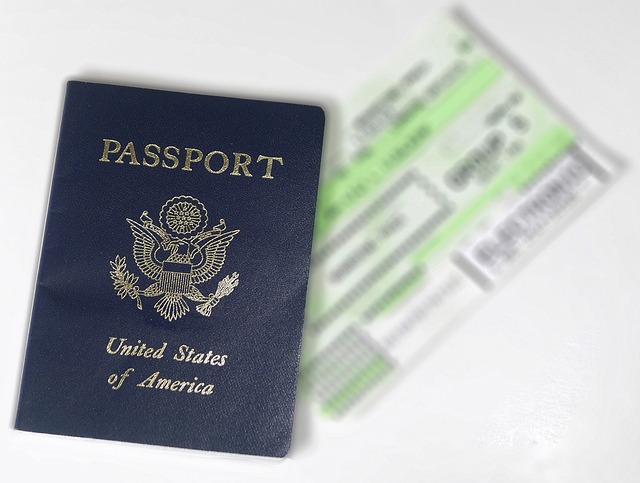
If you are flying with a toddler, you will need to check with your airline anything to do with fees, as policies around this topic are varied.
Bear in mind that if your two year old child is paying 10%, 50% or 100% of the ticket fare, that will have an impact on the luggage allowance. Not only will you get more space but also your child may get his/ her own seat.
As a side but nonetheless important note, make sure your kids and / or baby have valid passports before travelling internationally.
Have you considered connecting flights?
It may be a good idea to give the family a break by doing a 1 night stopover during a long distance flight. Consider this before you make your booking: Instead of waiting for a connecting flight, you would be sleeping at a hotel room and resuming your journey on the following day.
By doing this you may be shortening your stay at final destination, but at the same time you will be making a long and tedious trip more enjoyable for everyone.
Getting Ready
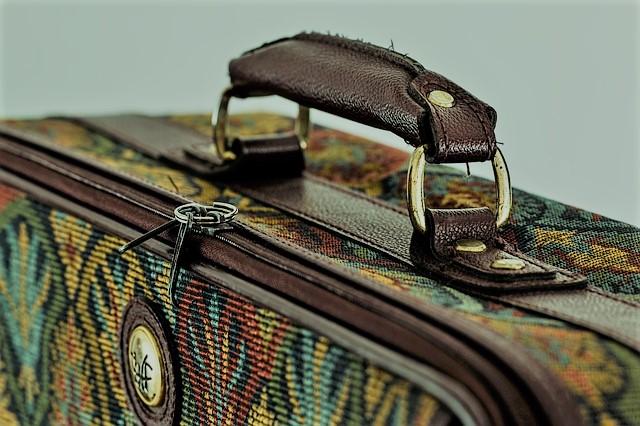 This is probably the most important step in preparing for flying with kids. If you think about it, once the plane has taken-off, there is very little you can do if you forget to pack one of your “MUST” items.
This is probably the most important step in preparing for flying with kids. If you think about it, once the plane has taken-off, there is very little you can do if you forget to pack one of your “MUST” items.
Before you prepare your carry-on and check-in baggage, make sure you understand what your baggage allowance is. This will be based on the fares you paid. If you are unsure, check with the airline as every airline is different and have different policies on number of bags you can carry and weight (sometimes depending on destination).
 Map your baggage before you start packing
Map your baggage before you start packing
Once you understand what baggage allowance you have, start mapping out how much stuff you can take in your check-in and carry-on baggage. This is important as you will need to prioritise based on space available and weight of your items.
If you don’t fly frequently, ‘carry-on baggage’ are the items you are allowed to carry with you on the plane cabin. Carry-on baggage can be accessed throughout the flight. On the other hand, ‘check-in baggage’ are the bags you drop off at check-in and collect once you land. This luggage is inaccessible during the flight.
Does this sound like enough preparation before you even start planning what to take on your trip or even pack? We are only getting started!
What to pack when flying with kids or a baby? Ultimate check list
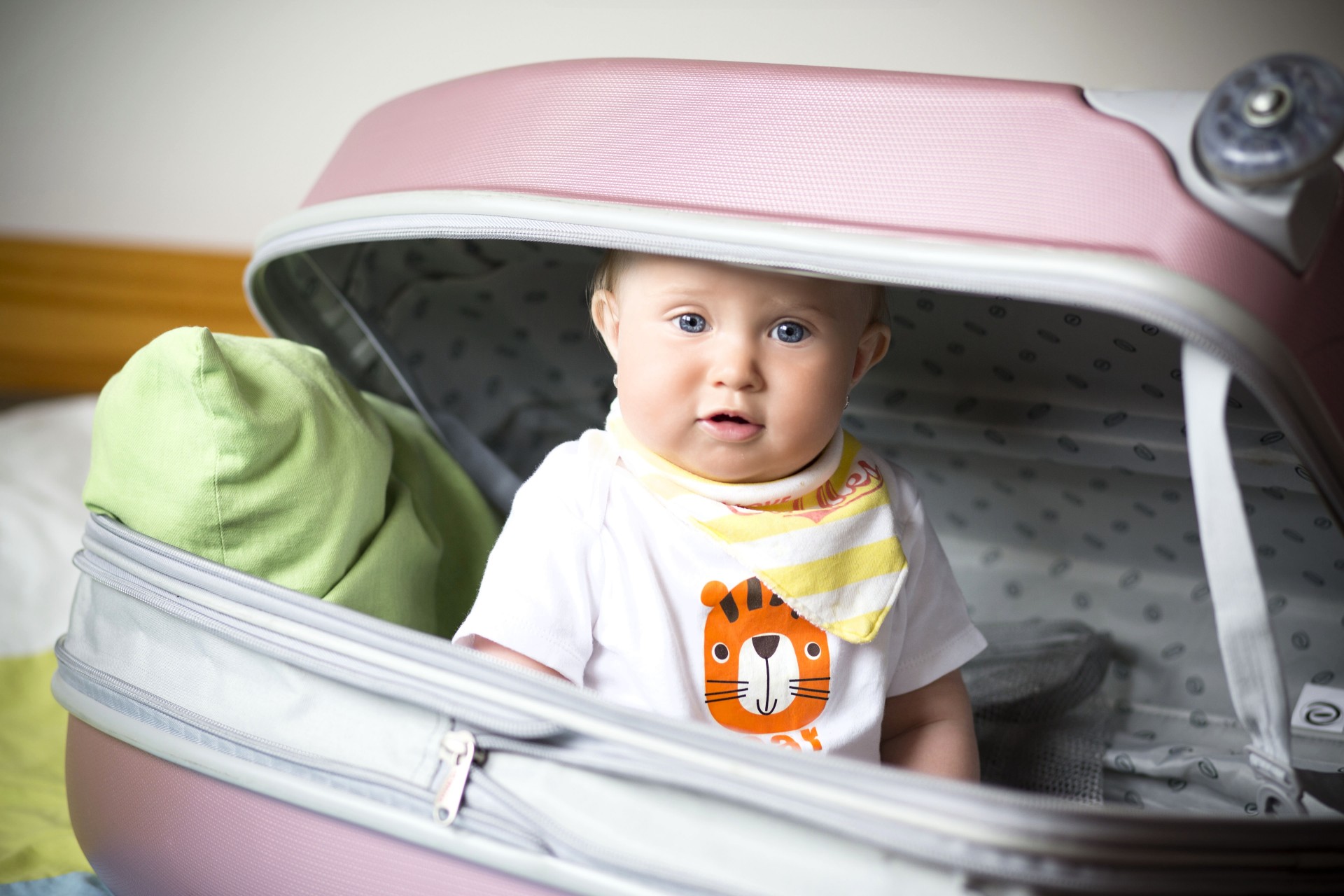 Pack SMART.
Pack SMART.
We’ve listed below some items for ALL AGES. Hopefully this will serve as a thought starter… just disregard what is not applicable to you and your family.
You can download the full list by clicking here.
Toiletries
– Diapers
– Plastic bags
– Wipes
– Hand gel (in a bottle less than 3.4 Oz or 100 ml max.)
Feeding
– Breast milk / Formula
– Baby bottle
– Cooler
– Cool bag
– Bibs (number depending on trip length)
– Sippy cup/ Water bottle
– Extra bottle/ Sippy cup/ Nipples
– Feeding utensils (plastic plate, spoon)
– Tissues
– Baby Food
– Snacks
Special mention on baby food & snacks
Some airlines provide baby food, even if your baby is not paying a fare. Check with your airline ahead of your flight. Either way, it is always good to take something that you are sure your baby will eat in your carry-on bag.
In that regard, supermarket baby ready meals are a good option. However, get your baby to try the meal before the flight to ensure he/ she will take it on the plane.
Some snacks like cereals, crackers, cookies and sometimes fruit can be taken on board. Visit your airline’s website for more info on this, just to be safe.
Also note that after an international flights you will need to declare any food you are entering the country upon arrival to avoid heavy fines.
First Aid basics
– Diaper Rash cream (in a small container)
– Pain relief medicine
– Pacifier
– Teething cream
Airplanes are equipped with first aid kits for emergencies, so focus only on what our baby or kids would need.
Spare clothes
Take some spare clothes for your baby in case of any ‘accidents’, including something warm to wear on the plane, regardless of the weather in the country of destination.
A spare blanket is always handy, as some domestic flights don’t provide a blanket on board. If your child is little, you will not regret taking one with you.
You may also take some spare clothes for you. One t-shirt will do (only for long flights).
Entertainment Options
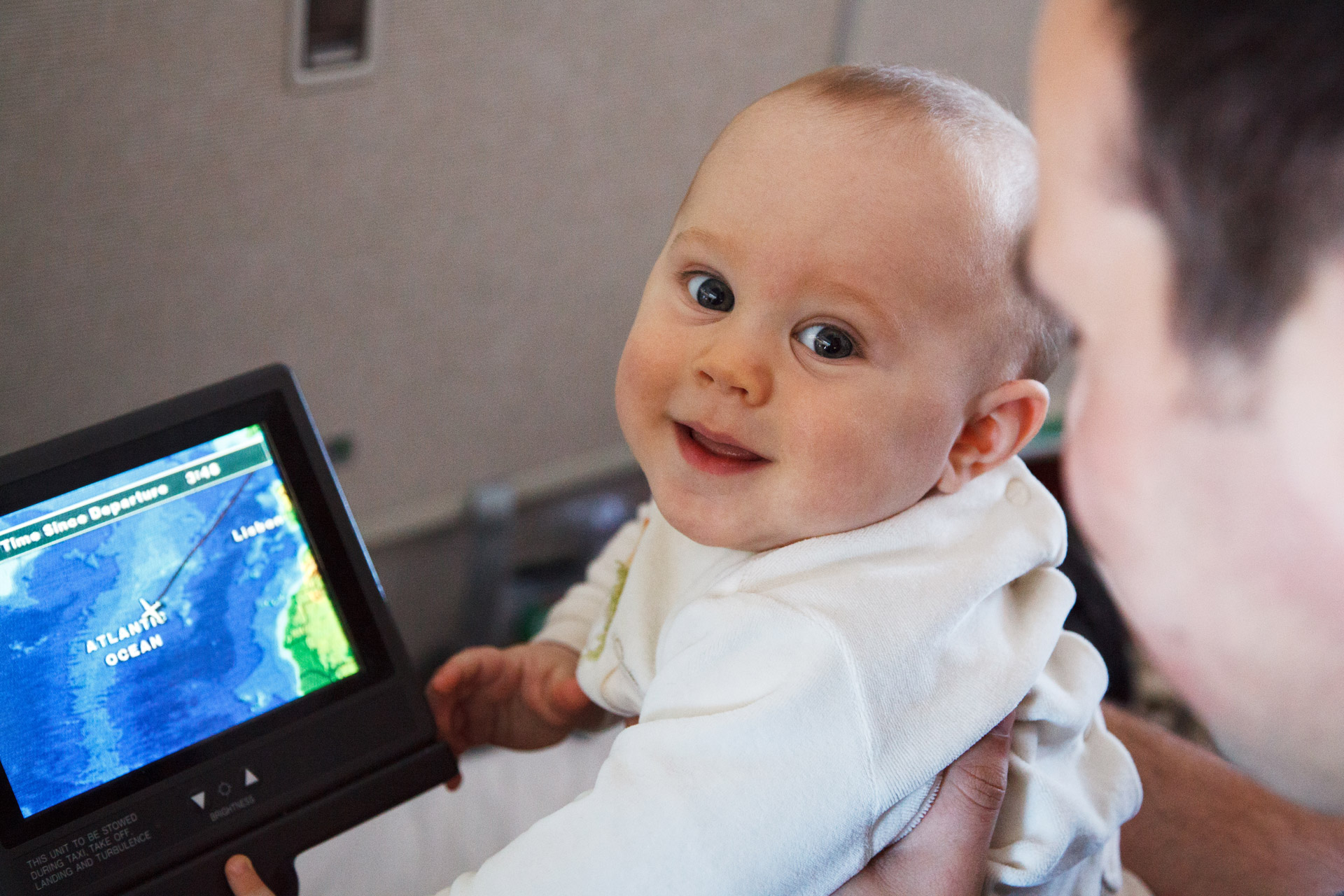 Bring some small, light- weight toys with you to keep your kids entertained. Avoid toys that have too many parts as they may get lost (such as puzzles).
Bring some small, light- weight toys with you to keep your kids entertained. Avoid toys that have too many parts as they may get lost (such as puzzles).
A fully charged tablet or phone is a great option, too. Remember to download your child’s favourite games or shows as most airlines don’t offer wi-fi on board.
Another great option is to bring a couple of colour pens, pencils and paper .
Other important baby items to consider
Baby carrier
A baby carrier is ideal to help you be ‘hands free’ when handling documents at check-in or if you want to have a break from rocking your baby on the plane.
Large baby items
We’ve mentioned this in our ‘Booking your Flights’ section, but it is worth reminding that most airlines will allow you to check-in one large baby items (event though your child may not pay a ticket fare).
A large baby item may be a stroller, portacot or car seat. As every airline has different policies, we recommend you contact them before your flight to make sure you won’t incur in extra charges.
Even though you can’t use the stroller in the cabin, it is a great help if you have a connecting flight or if you are travelling with several pieces of luggage. When connecting flights, check with your airline IF you can actually have access to the stroller while in transit. Some airlines provide strollers to passengers that request them.
How many of each item should I take in my carry-on luggage?
This is a very common question. We have previously listed some common baby / children items to carry on a plane. However, for some moms it gets hard to estimate quantities.
I have outlined below recommended quantities by length of trip, which are solely based on my personal experience travelling with my daughter. We took 23 flights of different lengths from when she was 6 weeks to 9 months old, so the quantities may vary according to your child’s age. Plus, you know your baby better than anyone and know if you need more of one thing and not the other.
Think of the time on the plane as you would think of doing your baby routine outside of home. Don’t be tempted to take too much of everything as there are space constraints on planes. Most of the time you won’t end up using many of the spares you travel with, but DO take spares, just in case.
| Items suggested per length of flight | Up to 4 hours | 5 to 8 hours | 8 to 15 hours | 16 to 24 hours | 24+ hours |
|---|---|---|---|---|---|
| Diapers | 4 | 5 | 7-8 | 10-12 | 12+ |
| Plastic bags | 2 | 2 | 3 | 3 | 3+ |
| Breast Milk/ Formula | As required | As required | As required | As required | As required |
| Baby bottle | 1 | 2 | 3 | 3 | 3 |
| Cooler | 1 | 1 | 1 | 1 | 1 |
| Cooler Bag | 1 | 1 | 1 | 1 | 1 |
| Bibs | 1 | 1 | 2 | 2 | 2+ |
| Water bottle/ sippy cup | 1 | 1 | 1 | 1 | |
| Feeding utensils (plastic plate, spoon) | 1 | 1 | 1 | 1 | 1 |
| Baby Food | 1 | 2 | 4 | 4-5 | 6 |
| Snacks | 2 | 2 | 4 | 4-5 | 6+ |
| Pacifier | 1 | 1 | 2 | 2 | 2 |
| Spare clothes for baby | 1 | 1 | 3 | 4 | 4+ |
| Spare clothes for you | - | 1 | 1 | 1 | 2 |
| Extra bottle/ sippy cup/ nipples | As required | As required | As required | As required | As required |
If your child is under 1 year old, it is safe to sterilize your baby bottles on the plane. You can learn how to in this article, where we also recommend amount of baby bottles to carry in short and long flights.
Ready to start packing your bags? Be Organised
Now that it’s time to start packing your bags, I would recommend you think of an efficient way to organise your things so that you can access different items in an easy way.
As an example, if you are allocated a bassinet seat you will not be allowed to have items on the floor during taxi, take-off and landing. Plan in advance what items you will need with you at all times and separate them.
One smart way to get organised is to carry a few separate colour bags that are easily identifiable within your carry-on baggage. For instance, green bag for food, pink bag for toiletries & first aid, red bag for entertainment.
If you are lucky to be travelling with a partner, they can assist by passing the different colour bags to you as need be. However, if you are travelling by yourself, it becomes essential to be well organised and know exactly where you keep your baby’s items.
Going to the airport
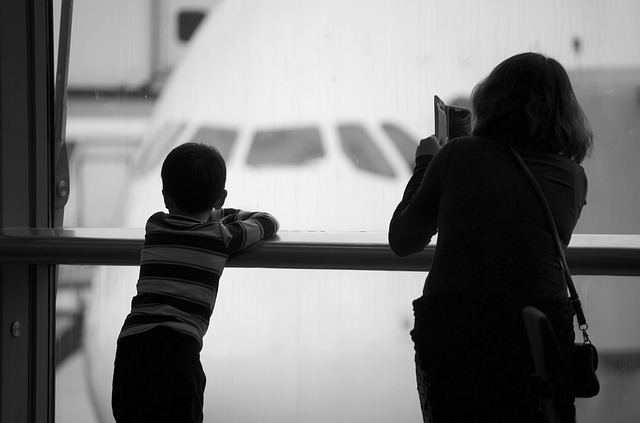 Frequent flyers, already know that most airlines will require them to check-in approx. 1 hour before domestic flights and 2 hours before international flights.
Frequent flyers, already know that most airlines will require them to check-in approx. 1 hour before domestic flights and 2 hours before international flights.
That’s great if you are travelling with your partner or with friends. Flying with kids requires a bit more preparation. Budget in some extra time to be safe as children are sometimes unpredictable.
Besides, if you have requested a bassinet in your booking, you may want to show up early at check-in to secure it.
Remember to tell the airline staff if you are taking a stroller or another large baby item as well.
At the checkpoint
Flying with breast milk or formula?
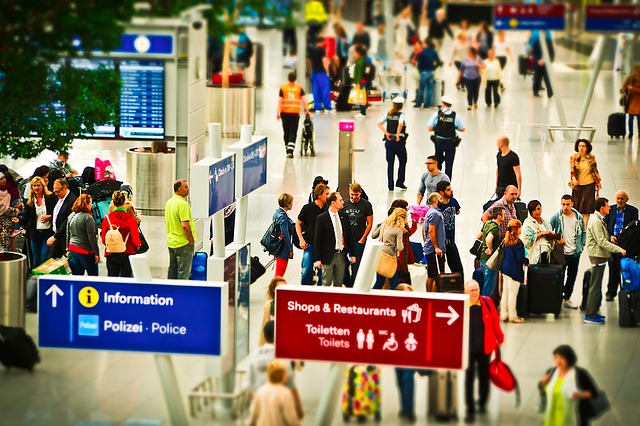 According to the TSA, you can carry breast milk, formula and/ or juice for your baby or toddler through the security checkpoint. Any other liquids, sprays and gels are limited to 3.4 ounces or 100 ml per container.
According to the TSA, you can carry breast milk, formula and/ or juice for your baby or toddler through the security checkpoint. Any other liquids, sprays and gels are limited to 3.4 ounces or 100 ml per container.
You will need to declare to the screening officer that you are flying with formula or breast milk in your carry-on luggage and it is highly likely it will get screened.
Talk with the officer about your options. To screen & test your milk, the container will need to be opened or even transferred to another container.
You may ask the officials that you prefer not to have your formula or breast milk opened and screened. In that case, they may need to proceed in a different way, like pat-down and screening other personal luggage instead.
As a side note, according to the Food & Drug Administration, X-rayed food and drink are safe to consume.
Remember to you keep the breast milk or formula separate from other gels, sprays and liquids that are O.K. to scan and always declare it.
Children Luggage
The stroller can go with you up until you board the plane.
Children items, including stroller, toys or carriers will need to be scanned. Large strollers that cannot go through the belt for screening, may be physically inspected.
Once you get to the boarding gate, fold your stroller and hand it over to the airline staff, who will take it with the check-in luggage. The stroller won’t be accessible to you until the plane has landed.
Metal Detector
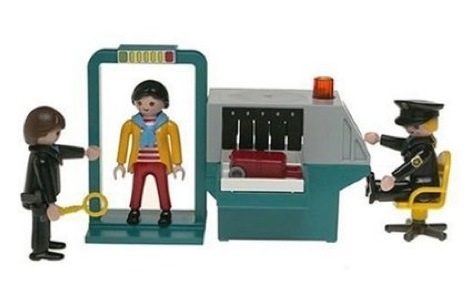
Everybody, including children, infants and toddlers are required to go through the metal detectors. If your child doesn’t walk, he/ she will need to be carried and if the alarm goes off additional screening may be required.
Older children can go through the metal detector unassisted. Remember to remove your baby carrier when you are going through the metal detector and carry your baby in arms.
Advanced Imaging Screening
This is a relatively new technology consisting of a cabin where full-body is scanned in 10 seconds.
You may not be screened by the Advanced Imaging technology if you are carrying an infant. If your older kids can stay still for 10 seconds, they may get screened. Officers will always run additional screening, even pat-down if they are concerned.
Children under 12 years of age don’t need to remove shoes and belts.
Before you board the plane
![]()
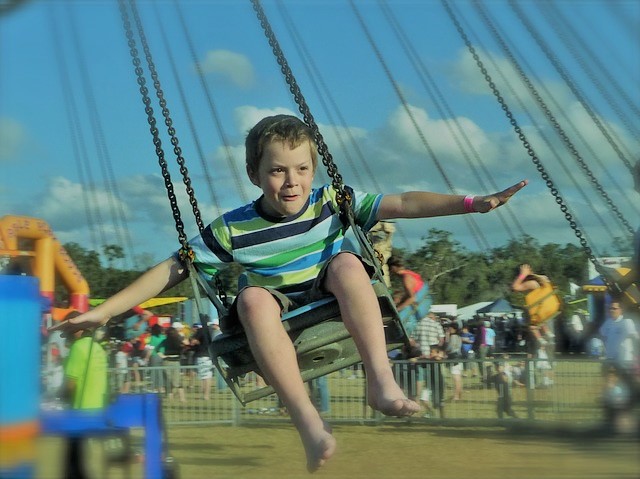 Is it your kids’ first flight? If so, talking to them and explaining what is going to happen next will help them be prepared. If possible, talk to them way before the day of the flight.
Is it your kids’ first flight? If so, talking to them and explaining what is going to happen next will help them be prepared. If possible, talk to them way before the day of the flight.
Be honest with them. If it is going to be a long flight tell them that they will need to be patient and keep themselves entertained while seating most of the flight.
If you are flying with a small baby, talk to him/ her as well. Be ready for long crying sessions and be happy if they don’t happen. Some parents take goodies for passengers seating next to them as pre-apology, although it is not expected.
In case you are travelling by yourself, you will need some help at some stage. Ask the flight attendants for help and to carry your baby or mind your kids while you go to the toilet.
A baby carrier will help a lot, especially if you are flying by yourself. It gives your arms a good rest and it is easy to take your baby for a walk on the plane. Should you be carrying your baby in arms and there is some turbulence, you could risk stumbling upon other passengers.
On the Plane
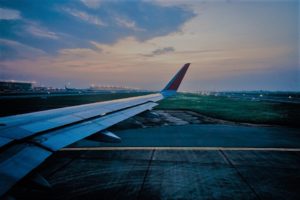
There is no single formula that works for everyone in terms of how to mentally prepare for flying with kids or a baby.
Being on a plane for hours with little space for mobility may get your kids anxious.
Here are some ideas on how to keep your little ones entertained.
Take regular short walks
Try having frequent toilet breaks with your kids and taking them for a walk. However, always be mindful of other passengers, your kids should be on their allocated seat for most of the flight.
You may also ask the flight attendant if your kids can see the cockpit, which will get them very excited.
Stretching Exercises
During long flights all passengers tend to go for walks or stand up at some stage. Stretching exercises will help your joints and blood pressure. You can read the information card on the plane, which will feature some physical exercises to release your muscles.
Engage your kids in doing this exercises as another way to keep them entertained.
Pencil and Paper
Bring some pencils and paper and play games with your kids on the plane using the trays in the seat in front of you.
Check out Todays Parent website which showcases 8 fun pencil games to play with kids of different ages, such as Categories and Hangman. You can even print their templates and you are ready to go!
Tablet or Phone
Have I mentioned the fully charged tablet or phone? In a very long flight it is useful but batteries DO ran out. Just bring plenty of pencils and paper.
During short flights airlines rarely offer free entertainment for passengers. Your fully charged tablet or phone should be really handy to keep your little ones busy for part of your flight.
Are you ready to fly?
Hope you enjoyed the read and don’t forget to leave us your comments? What else do you do to prepare for flying with kids or a baby?

